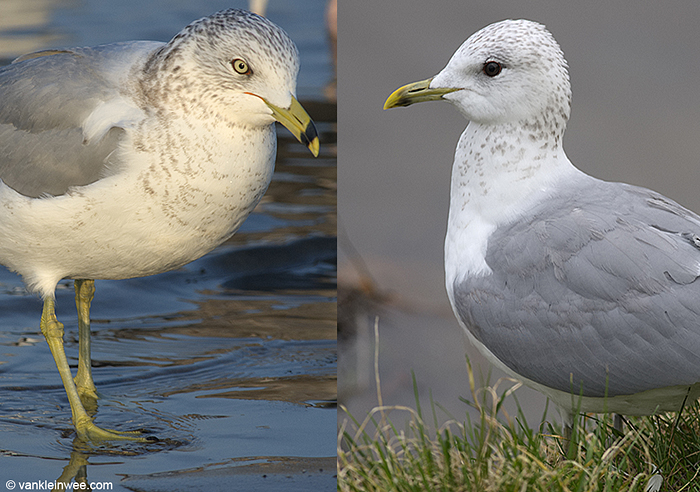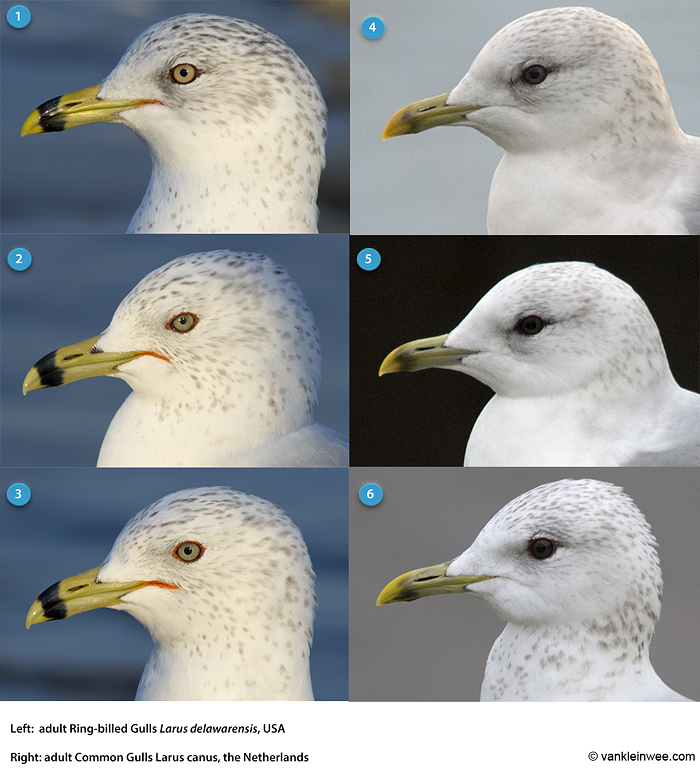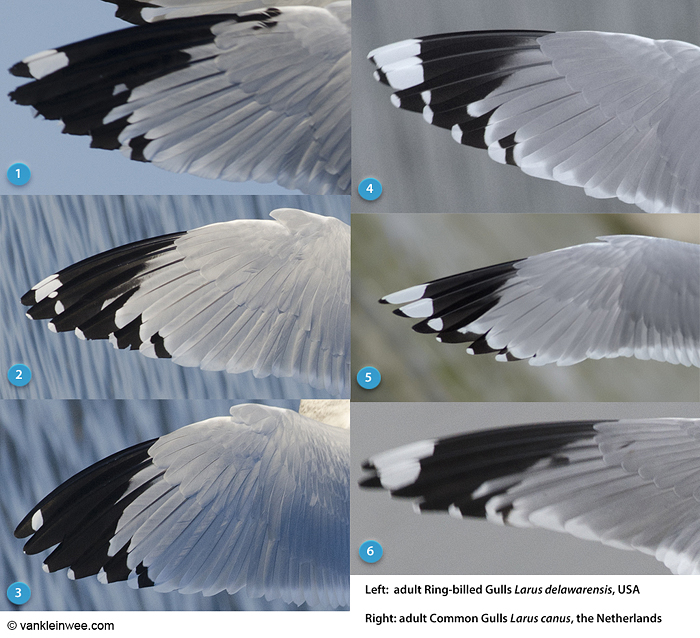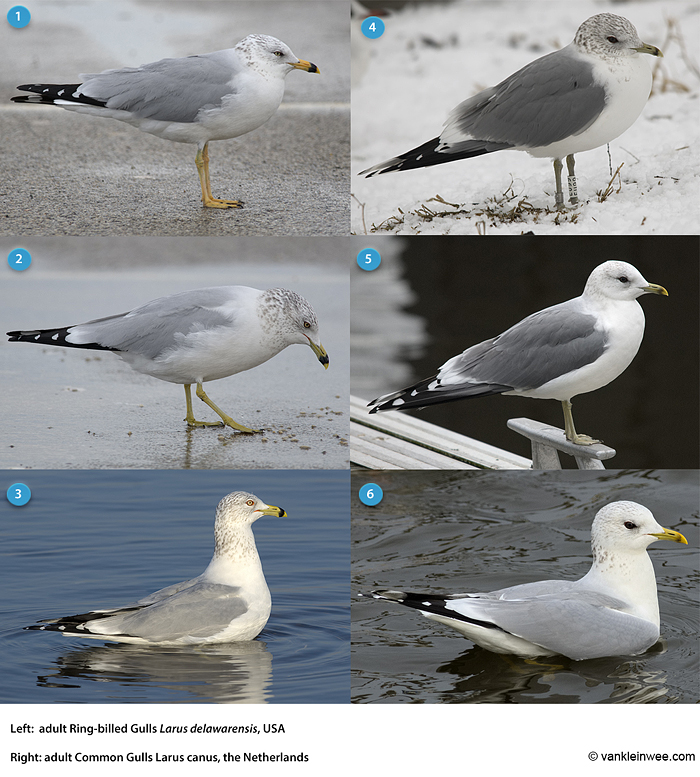|
||
Coordinators: 1cy June 2cy Jan 3cy Jan adult Jan |
adult: MarchRing-billed Gulls vs Common Gulls: comparison from a Dutch perspective - 201402 by: Maartren van Kleinwee (GULLS TO THE HORIZON)- March 06 2014.
Ring-billed Gulls Larus delawarensis are common visitors to Europe with frequent sightings in countries directly bordering the North Atlantic such as Ireland, Spain and Portugal. Note #1: This article is nothing more than a personal exercise in comparing 2 random groups from both sides of the Atlantic; it should by no means be seen as a definitive comparison between these 2 species; this requires a far higher number of individuals. AdultsAlthough it should be quite straight forward to distinguish an adult Ring-billed Gull from a Common Gull, lets compare some of the main features. Compared to an adult Common Gull, an adult Ring-billed Gull is different in the following aspects:
Bill and eye color comparison
Note that the bill pattern on the Ring-billed Gulls is very distinct, while the ‘ring’ on the bill of a Common Gull is very faint. Primary pattern |
 Ring-billed Gull delawarensis A36 adult, March 19 2014, Wethersfield, CT. Picture: Keith Mueller. Ring-billed Gull delawarensis A36 adult, March 19 2014, Wethersfield, CT. Picture: Keith Mueller. |
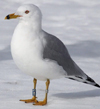 Ring-billed Gull delawarensis CH1 adult, March 05 2014, CT landfill. Picture: Keith Mueller. Ring-billed Gull delawarensis CH1 adult, March 05 2014, CT landfill. Picture: Keith Mueller. |
||
 Ring-billed Gull delawarensis JZ2 6CY, March 20 2014, Stratford, CT. Picture: Donna Rae Henault Caporaso. Ring-billed Gull delawarensis JZ2 6CY, March 20 2014, Stratford, CT. Picture: Donna Rae Henault Caporaso. |
||
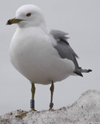 Ring-billed Gull delawarensis K0X adult, March 19 2014, Wethersfield, CT. Picture: Keith Mueller. Ring-billed Gull delawarensis K0X adult, March 19 2014, Wethersfield, CT. Picture: Keith Mueller. |
||
 Ring-billed Gull delawarensis KUF 7CY, March 17 2014, Hammonaset beach, Madison, CT. Picture: Keith Mueller. Ring-billed Gull delawarensis KUF 7CY, March 17 2014, Hammonaset beach, Madison, CT. Picture: Keith Mueller. |
||
 Ring-billed Gull delawarensis L1C adult, March 17 2017, Edgewater Park, Cleveland, Ohio. Picture: Chuck Slusarczyk. Ring-billed Gull delawarensis L1C adult, March 17 2017, Edgewater Park, Cleveland, Ohio. Picture: Chuck Slusarczyk. |
||
 Ring-billed Gull delawarensis LKF adult, March 19 2014, South Meriden, CT. Picture: Keith Mueller. Ring-billed Gull delawarensis LKF adult, March 19 2014, South Meriden, CT. Picture: Keith Mueller. |
||
 Ring-billed Gull delawarensis X9U adult, March 05 2014, CT landfill. Picture: Keith Mueller. Ring-billed Gull delawarensis X9U adult, March 05 2014, CT landfill. Picture: Keith Mueller. |
||
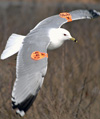 Ring-billed Gull delawarensis 440 adult, March 01 2010, Print Works Pond, Cranston, RI. Picture: Scott Grant. Ring-billed Gull delawarensis 440 adult, March 01 2010, Print Works Pond, Cranston, RI. Picture: Scott Grant. |
||
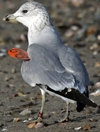 Ring-billed Gull delawarensis 643 adult, February - March 2012, Southbury, CT Ring-billed Gull delawarensis 643 adult, February - March 2012, Southbury, CT |
||
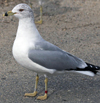 Ring-billed Gull delawarensis 672 adult, March 05 2014, Shepaug Dam, Southbury, CT. Picture: Keith Mueller. Ring-billed Gull delawarensis 672 adult, March 05 2014, Shepaug Dam, Southbury, CT. Picture: Keith Mueller. |
||
 Ring-billed Gull delawarensis A21 adult, March 25 2015, Wooster Pond, Stratford, CT. Picture: Frank Mantlik. Ring-billed Gull delawarensis A21 adult, March 25 2015, Wooster Pond, Stratford, CT. Picture: Frank Mantlik. |
||
 Ring-billed Gull delawarensis A74 adult and A75 2nd cycle (3CY), March 08 2014, UMASS Boat Ramp, Lowell, MA. Picture: Anthony L. Ring-billed Gull delawarensis A74 adult and A75 2nd cycle (3CY), March 08 2014, UMASS Boat Ramp, Lowell, MA. Picture: Anthony L. |
||
 Ring-billed Gull delawarensis ?07 adult, March 16 2014, Stratford Boat Ramp - Stratford, CT. Picture: Donna Caporaso. Ring-billed Gull delawarensis ?07 adult, March 16 2014, Stratford Boat Ramp - Stratford, CT. Picture: Donna Caporaso. |
||
 Ring-billed Gull delawarensis HXP 6CY, March 19 2014, Stratford boat ramp, CT. Picture: Donna Rae Henault Caporaso. Ring-billed Gull delawarensis HXP 6CY, March 19 2014, Stratford boat ramp, CT. Picture: Donna Rae Henault Caporaso. |
||
 Ring-billed Gull delawarensis TC11 adult, March 24 2014, Toronto, ON. Picture: Amanda Guercio. Ring-billed Gull delawarensis TC11 adult, March 24 2014, Toronto, ON. Picture: Amanda Guercio. |
||
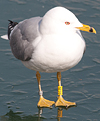 Ring-billed Gull delawarensis TC22 adult, March 24 2014, Toronto, ON. Picture: Amanda Guercio. Ring-billed Gull delawarensis TC22 adult, March 24 2014, Toronto, ON. Picture: Amanda Guercio. |
||
 Ring-billed Gull delawarensis Fed band adult, March 19 2014, Wethersfield, CT. Picture: Keith Mueller. Ring-billed Gull delawarensis Fed band adult, March 19 2014, Wethersfield, CT. Picture: Keith Mueller. |
||
 Ring-billed Gull delawarensis adult, March 2007, Cobourg, Ontario, Canada. Picture: Wikipedia. Ring-billed Gull delawarensis adult, March 2007, Cobourg, Ontario, Canada. Picture: Wikipedia. |
||
 Ring-billed Gull delawarensis adult, March 01 2013, Canaveral National Seashore, FL. Picture: Tammy Karr. Ring-billed Gull delawarensis adult, March 01 2013, Canaveral National Seashore, FL. Picture: Tammy Karr. |
||
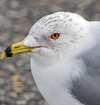 Ring-billed Gull delawarensis adult, March 17 2013, Rio Grande, NJ. Picture: Don Freiday. Ring-billed Gull delawarensis adult, March 17 2013, Rio Grande, NJ. Picture: Don Freiday. |
||
 Ring-billed Gull delawarensis adult, March 01 2013, Canaveral National Seashore, FL. Picture: Tammy Karr. Ring-billed Gull delawarensis adult, March 01 2013, Canaveral National Seashore, FL. Picture: Tammy Karr. |
||
 Ring-billed Gull delawarensis adult, March 01 2013, Canaveral National Seashore, FL. Picture: Tammy Karr. Ring-billed Gull delawarensis adult, March 01 2013, Canaveral National Seashore, FL. Picture: Tammy Karr. |
||
 Ring-billed Gull delawarensis adult, March 10 2009, Gijón, Asturias, Spain. Picture: Luis Mario Arce. Ring-billed Gull delawarensis adult, March 10 2009, Gijón, Asturias, Spain. Picture: Luis Mario Arce. |
||
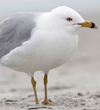 Ring-billed Gull delawarensis adult, March 01 2013, Canaveral National Seashore, FL. Picture: Tammy Karr. Ring-billed Gull delawarensis adult, March 01 2013, Canaveral National Seashore, FL. Picture: Tammy Karr. |
||
 Ring-billed Gull delawarensis adult, March 04 2010, Virginia Lake, Reno, Washoe Co, Nevada. Picture: Fugle. Ring-billed Gull delawarensis adult, March 04 2010, Virginia Lake, Reno, Washoe Co, Nevada. Picture: Fugle. |
||
 Ring-billed Gull delawarensis adult, March 18 2012, Virginia Lake, Reno, Washoe Co, Nevada. Picture: Fugle. Ring-billed Gull delawarensis adult, March 18 2012, Virginia Lake, Reno, Washoe Co, Nevada. Picture: Fugle. |
||
 Ring-billed Gull delawarensis adult, March 20 2014, Wethersfield, CT. Picture: Keith Mueller. Ring-billed Gull delawarensis adult, March 20 2014, Wethersfield, CT. Picture: Keith Mueller. |
||
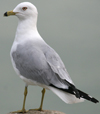 Ring-billed Gull delawarensis adult, March 25 2006, Dana Point, Orange Co., CA. Picture: John Avise. Ring-billed Gull delawarensis adult, March 25 2006, Dana Point, Orange Co., CA. Picture: John Avise. |
||
 Ring-billed Gull delawarensis adult, March 28 2010, Bray, Wicklow Co., Ireland. Picture: Brendan Marnell. Ring-billed Gull delawarensis adult, March 28 2010, Bray, Wicklow Co., Ireland. Picture: Brendan Marnell. |
||
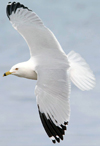 Ring-billed Gull delawarensis adult, March 09 2014, Chicago, IL. Picture: Amar Ayyash. Ring-billed Gull delawarensis adult, March 09 2014, Chicago, IL. Picture: Amar Ayyash. |
||
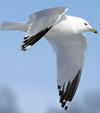 Ring-billed Gull delawarensis adult, March 03 2014, Appalachian Counties, Ohio. Picture: Roger Hickey. Ring-billed Gull delawarensis adult, March 03 2014, Appalachian Counties, Ohio. Picture: Roger Hickey. |
||
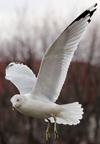 Ring-billed Gull delawarensis adult, March 11 2011, Constitution Gardens - Washington, DC. Picture: Mr TinDC. Ring-billed Gull delawarensis adult, March 11 2011, Constitution Gardens - Washington, DC. Picture: Mr TinDC. |
||
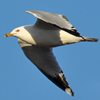 Ring-billed Gull delawarensis adult, March 17 2013, Mendon, Utah. Picture: Ryan O'Donnell. Ring-billed Gull delawarensis adult, March 17 2013, Mendon, Utah. Picture: Ryan O'Donnell. |
||
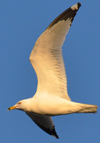 Ring-billed Gull delawarensis adult, March 17 2013, Mendon, Utah. Picture: Ryan O'Donnell. Ring-billed Gull delawarensis adult, March 17 2013, Mendon, Utah. Picture: Ryan O'Donnell. |
||
 Ring-billed Gull delawarensis adult, March 09 2014, Chicago, IL. Picture: Amar Ayyash. Ring-billed Gull delawarensis adult, March 09 2014, Chicago, IL. Picture: Amar Ayyash. |
||
 delawarensis Ring-billed Gull
delawarensis Ring-billed Gull